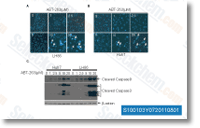A serious limitation of this study is the rat tail sta tic compression model does not properly reflect all aspects of human disc degeneration. This models unphysiological situation immobility, extended pres positive, and absence of trauma could result in some con tradictions to people, such as lack of radial tears, mucous degeneration, and granular alterations in histology and tiny involvement of irritation. It could also describe the observed simultaneous NP and AF degeneration. Further research applying the static compression model must be carried out to detect the turning point from reversible to irreversible degeneration, providing critical facts to prevent degenerative disc conditions. Conclusions This rat tail sustained static compression model mimics ECM metabolic imbalances of MMPs, aggrecanases, and TIMPs in human intervertebral disc degeneration.
In early phases, MMP three TIMP one and TIMP 2 and ADAMTS four and ADAMTS five TIMP three imbalances exist. While in the late stage, the MMP 3 TIMP 1 and TIMP 2 imbalance dominates. These imbalances and their results on aggrecanolysis are typical in the NP and AF. A dominant imbalance of MMP 3 TIMP one and TIMP two selleck chemical AGI-5198 relative to ADAMTS 4 and ADAMTS five TIMP 3 is a probable indication of an sophisticated, irreversible stage of intervertebral disc degeneration. Introduction Sjgrens syndrome can be a somewhat frequent autoim mune exocrinopathy which is connected with infiltration of lymphocytes and it is characterized by steadily professional gressive lachrymal and salivary dysfunction. The exocrine dysfunction can occur alone or in the presence of other systemic autoimmune conditions like rheumatoid arthritis, systemic lupus erythematosus, and systemic sclerosis.
Also to presenting the manifestations due to exocrine dysfunction, it might existing quite a few sys temic manifestations this kind of as arthralgia, thyroiditis, renal involvement, peripheral neuropathy, cutaneous vasculi tis, and lymphoma. Though investigate on immuno pathology, genetics, Brivanib and virus continues to be carried out above the past few decades to elucidate the pathogenesis of SS, the etiology remains unknown. The Toll like receptor relatives could be the prototype  of pattern recognition receptors that sense varied patho gen linked molecular patterns, together with lipids, lipoproteins, proteins, and nucleic acids. Recognition of PAMPs by TLRs activates intracellular signaling pathways and this culminates in the induction of inflammatory cytokines, chemokines, and interferons and upregulation of co stimulatory molecules. Thereby, the household of TLRs expressed on antigen presenting cells this kind of as dendritic cells and macrophages perform cri tical roles in the subsequent improvement of adaptive immune response also as during the induction of innate immune response.
of pattern recognition receptors that sense varied patho gen linked molecular patterns, together with lipids, lipoproteins, proteins, and nucleic acids. Recognition of PAMPs by TLRs activates intracellular signaling pathways and this culminates in the induction of inflammatory cytokines, chemokines, and interferons and upregulation of co stimulatory molecules. Thereby, the household of TLRs expressed on antigen presenting cells this kind of as dendritic cells and macrophages perform cri tical roles in the subsequent improvement of adaptive immune response also as during the induction of innate immune response.
Mirna Mimics
miRNA inhibitors for single or high throughput silencing
